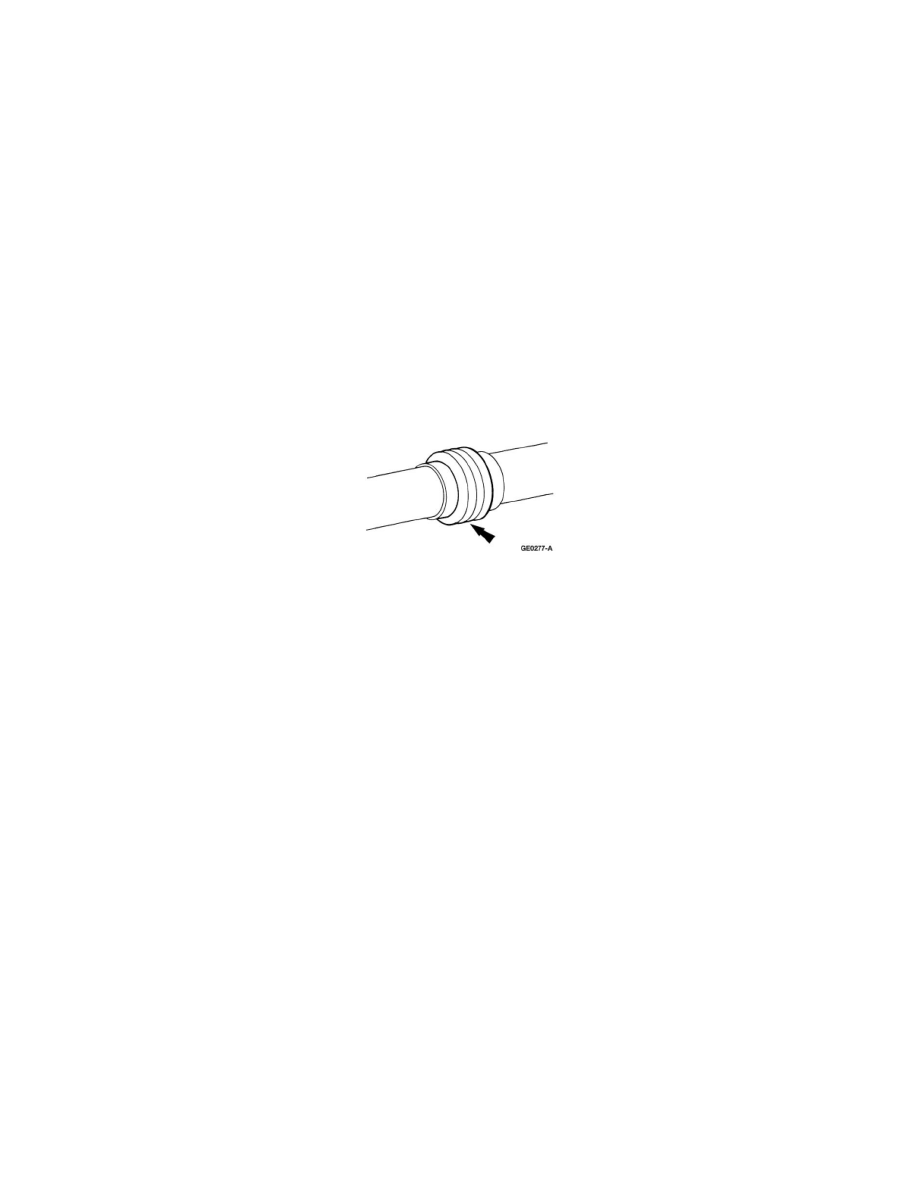Mountaineer AWD V8-4.6L (2010)

Drive/Propeller Shaft: Description and Operation
Driveshaft
The driveshafts consist of the following:
-
U-joint flanges
-
U-joints
-
Nylon thrust washers, located at each base of the bearing cup, which control end play, position the needle bearings and improve grease movement
-
Lubed-for-life design and require no lubrication
-
CV joint flanges
-
CV joints
-
Slip-yoke
-
Slip-joint boots
-
Traditional welded-on balance weights
Vehicles have the following types of driveshafts:
-
One-piece rear driveshaft with 2 U-joints and a front slip-yoke
-
One-piece front driveshaft with a front U-joint, a slip-yoke and a rear CV joint
-
Two-piece rear driveshaft with 3 U-joints
-
Two-piece rear driveshaft with 2 CV joints and one U-joint
NOTE: Whenever the vehicle is raised on a hoist, inspect the U-joint slip-yoke boot for rips or holes. Install new if required.
NOTE: All driveshafts are balanced. If undercoating the vehicle, protect the driveshaft and U-joints to prevent application of any undercoating material.
The driveshaft transfers input from the transmission or transfer case to the front or rear drive axles. The driveshaft is composed of the U-joints or CV
joints, connecting shafts and attaching yokes. The driveshaft accommodates the change in length in the driveline system by sliding on the transmission
output shaft with a slip-yoke or a slip-joint which is integral to the driveshaft. The shafts vary in diameter, length, number of coupling shafts and U-joints
or CV joints, depending on vehicle application. The U-joints and CV joints allow the driveshaft to rotate smoothly through the changing angles between
the transmission output shaft and the driveshaft, plus the changes between the rear axle pinion angle and the driveshaft. On 2-wheel drive vehicles, power
is transmitted through the transmission to the driveshaft and then to the rear axle. On All-Wheel Drive (AWD) vehicles, power is transmitted from the
transmission to the front and rear axles through the transfer case.
The engine angle is built into the engine mounts. If the driveshaft angles are out of specification, the engine mounts must be inspected for damage.
